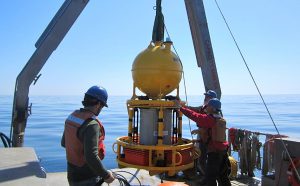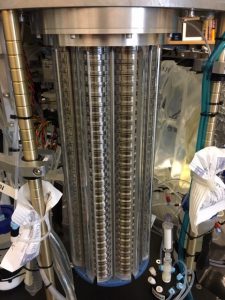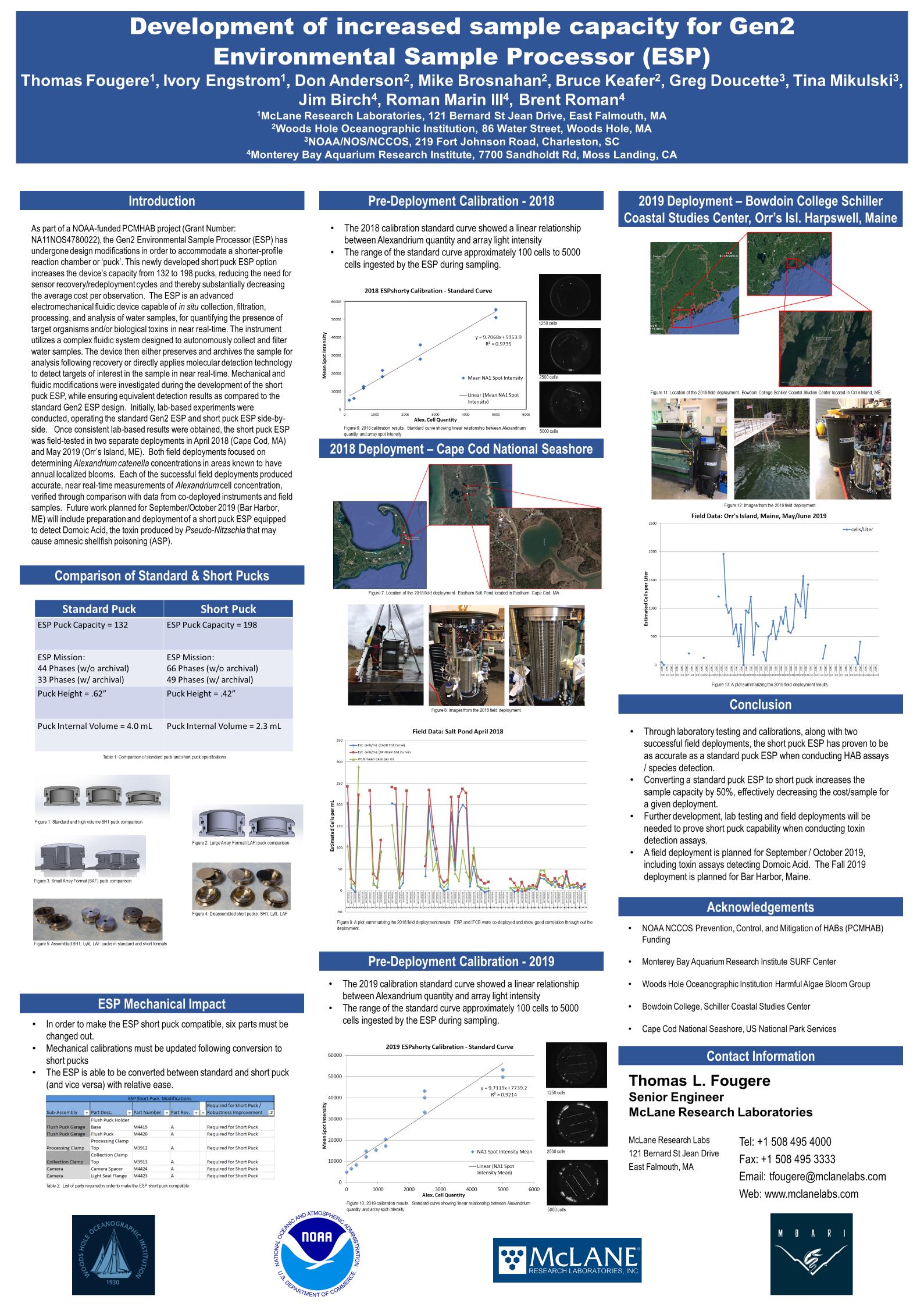NCCOS funded improvements made to an in situ robotic biological sensing system, called the Environmental Sample Processor, are being shared at three major ocean science conferences in the fall of 2019.. These presentations bring public awareness to this effort, facilitate information exchange, and convey lessons learned.

Since initial development in the late 1990s, the Environmental Sample Processor (ESP) has become a versatile and reliable sampling device for harmful algal bloom (HAB) cells and toxins. With a recent NCCOS Prevention, Control, and Mitigation of Harmful Algal Blooms project led by McLane Research Laboratories, Inc., the second-generation version of the ESP underwent design modifications and rigorous testing that led to the adoption of a shorter-profile reaction chamber or ‘puck’. This newly developed “short puck” increases ESP sampling capacity by 50 percent, enabling a capacity of 198 pucks or 66 total samples.
The increased sampling capacity allows for longer sensor deployments and/or higher temporal resolution sampling, while substantially reducing the average cost per observation (including less ship time maintenance). Reduced costs provide greater accessibility of the ESP to more diverse user groups, leading to improved capabilities for monitoring and managing HABs in marine and freshwater systems.


McLane Research Labs, collaborators at Monterey Bay Aquarium Research Institute, the Woods Hole Oceanographic Institution, and NCCOS, and a team of advisors contributed to the success of the PCMHAB project.
Catch the poster (see poster below) which captures project findings and follow-on efforts at OceanObs19 (September), OCEANS 19 (October), and the 10th US HAB Symposium (November).
For more information, contact Marc Suddleson.

